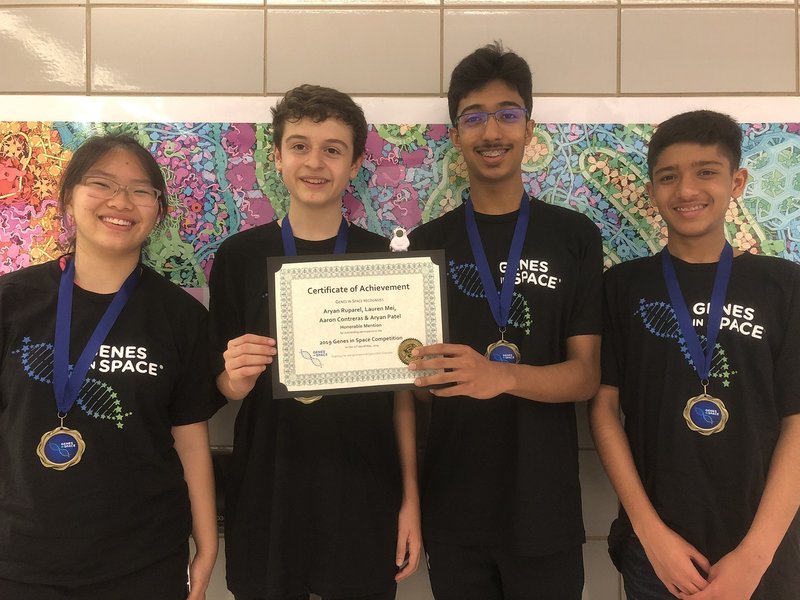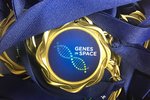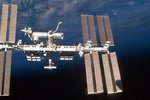GiS Spotlight: Honorable Mentions Aryan, Aaron, Aryan, and Lauren
Each year, Genes in Space awards 10 Honorable Mentions to student teams whose proposals show outstanding scientific rigor and creativity. Four students from Stuyvesant High School in New York City — Aryan Ruparel (14), Aaron Contreras (14), Aryan Patel (14), and Lauren Mei (17) — make up one such team. Here, the team describes their winning idea, which they developed with guidance from their mentor and teacher, Jessica Quenzer, and shares advice for the next generation of Genes in Space contestants.

Why did you choose to participate in Genes in Space? We were intrigued by the idea of participating in a Genes in Space competition while being part of the Science Research Club. Mr. Econome, the club moderator, introduced us to a competition that he had several students take part in previously known as Genes in Space. After discussing various ideas with him, we collaboratively selected one idea. In addition to Mr. Econome, we had an AP Biology Teacher at Stuyvesant High School, Ms. Quenzer, assist us with formulating the idea, informing us about new lab techniques, and helping us work on and edit our proposal. After putting in hours of work into it and with the full support of both teachers, we decided to submit our proposal to the 2019 Genes in Space competition.
How did you choose your topic? When we first joined the Research club, we thought about various ideas and then analyzed many hormones that would be interesting to test. We reached a consensus on one hormone, IGF-1, which binds onto the receptor of muscle cells leading to muscle growth and endochondral ossification. After a period of time, we started to wonder what affected the release of IGF-1, and then through a series of scientific research papers, we concluded that HGH was the major factor (so we wondered how its levels would fluctuate in space).
What did you gain from participating in Genes in Space? We learned about organoids, qRT-PCR, cyclin D, and Northern blotting. Throughout our experiences, also learned about Western blotting and cell cultures. Organoids are artificially made organs. Their potential in biomolecular science intrigued us greatly, and we would love to work with them in the future. qRT-PCR is another piece of fascinating technology that intrigued us. It is used to monitor PCR, and its undeniable importance in advancing the field of genetics is definitely something to consider. Cyclin-D is a cell cycle regulator that is important in the transition of a cell from the G1 phase to the S phase. It is a very vital protein because of its connection as a potential cause of cancer, and other major conditions. Northern blotting is a procedure that is used to locate specific RNA sequences. This technique comes into play in almost every experiment related to cell cycle regulation. Overall, Genes in Space gave us the opportunity to apply our knowledge of biology to the laboratory, and design an experiment that can potentially benefit science. It also fostered our love for genetics and biology as a whole.
Do you have any advice for future Genes in Space participants? The piece of advice that we would share is to perform a lot of research before answering any question as part of your proposal. It's okay to experiment with different ideas to see which fits the best with the goals of this project. Think about the results of your experiment and how it can impact the scientific society if your experiment were to be actually conducted. Go with your gut feeling. It's okay to be contemplating. In the end, all that matters is that you tried!


